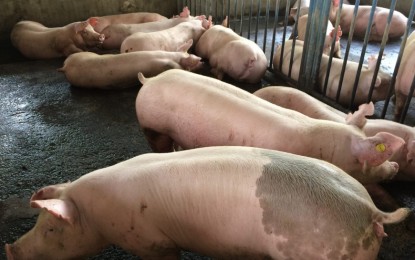
(Photo courtesy of DA)
MANILA – Local government units (LGUs) can now align their programs with the Bantay ASF sa Barangay (BABay ASF) program of the Department of Agriculture (DA) as they dig deep into their funds to control the African swine fever (ASF) outbreak, officially classified as a state of calamity.
ASF started in mid-2019 and became widespread in 2020, the same year that the agriculture sector battled with the effects of the Covid-19 pandemic and successive weather disturbances.
DA Secretary William Dar submitted the resolution to declare the ASF as a calamity on April 20, 2021 and it was signed on May 10 as Presidential Proclamation No. 1143 (Declaring a state of calamity throughout the Philippines due to the African Swine Fever outbreak).
Dar told the Philippine News Agency in a phone interview on Friday that the belated declaration of a state of calamity, which he said was a much-needed shot-in-the-arm for the hog industry, can be attributed to a number of factors.
"The idea to declare a state of calamity did not push through immediately as initial resources has been provided for ASF prevention and control activities through the Contingent Fund of the President and Quick Response Fund (QRF) of the DA," Dar explained.
LGUs can now tap their calamity funds for intensification of disease monitoring and surveillance; putting human resource for quarantine and border control; strengthening of biosecurity implementation; and if need be, disease control activities including depopulation of hogs.
They may also procure the necessary equipment and supplies to support disease prevention and control activities and test kits to enhance diagnostic capabilities.
Coordination
The DA's Bureau of Animal Industry (BAI) will work closely with LGUs to ensure that their ASF contingency and action plans are aligned and consistent with the overall plan of the national government.
BAI has so far suggested that the LGUs' QRF may be used for the provision of personal protective equipment sets and needed equipment for quarantine and checkpoint personnel; establishment and maintenance of ASF biosecurity checkpoints; implementation of ASF information campaign in partnership with the DA-BAI, hog raisers' groups and the private sector; procurement of test kits, biologics and other needed equipment and materials; and strengthening of diagnostic capability to support early warning system, surveillance and monitoring.
During a press briefing on Wednesday, Dar announced there will be a total of 440,563 hog breeders that will be produced by government (225,103) and private-initiated (215,460) activities by 2023.
The program will be carried out through INSPIRE (Integrated National Swine Production Initiatives for Recovery and Expansion), a three-year hog repopulation program which starts this year.
With a combined budget of PHP29.6 billion, INSPIRE and its concurrent program, BABay ASF, aims to address the ASF problem.
The DA also floated loan opportunities for commercial hog raisers with concessional rates from Landbank of the Philippines, which has offered PHP30 billion.
The Development Bank of the Philippines, on the other hand, will be offering PHP12 billion for commercial hog raisers with low interest rates.
Indemnification fund for hog raisers affected by the ASF is also offered by the government.
Hog industry
Dr. Laarni Cabantac, DA-BAI Veterinarian IV, said in her presentation during the briefing that according to the World Organization for Animal Health, the Philippines is eighth in the world in terms of the volume of pork production and number of breeding sows.
The hog industry provides about 60 percent of the total animal meat consumption of Filipinos, Cabantac said.
As of January 2018, she said the hog industry is the largest among animal industries, worth around PHP191 billion. It is also the second largest contributor to the country's agriculture, next to rice.
Recent data from the Philippine Statistics Authority revealed that over three million hogs have been lost due to the ASF outbreak.
The outbreak has affected 12 regions, 46 provinces, 502 cities and municipalities, and 2,652 villages so far. (PNA)
